
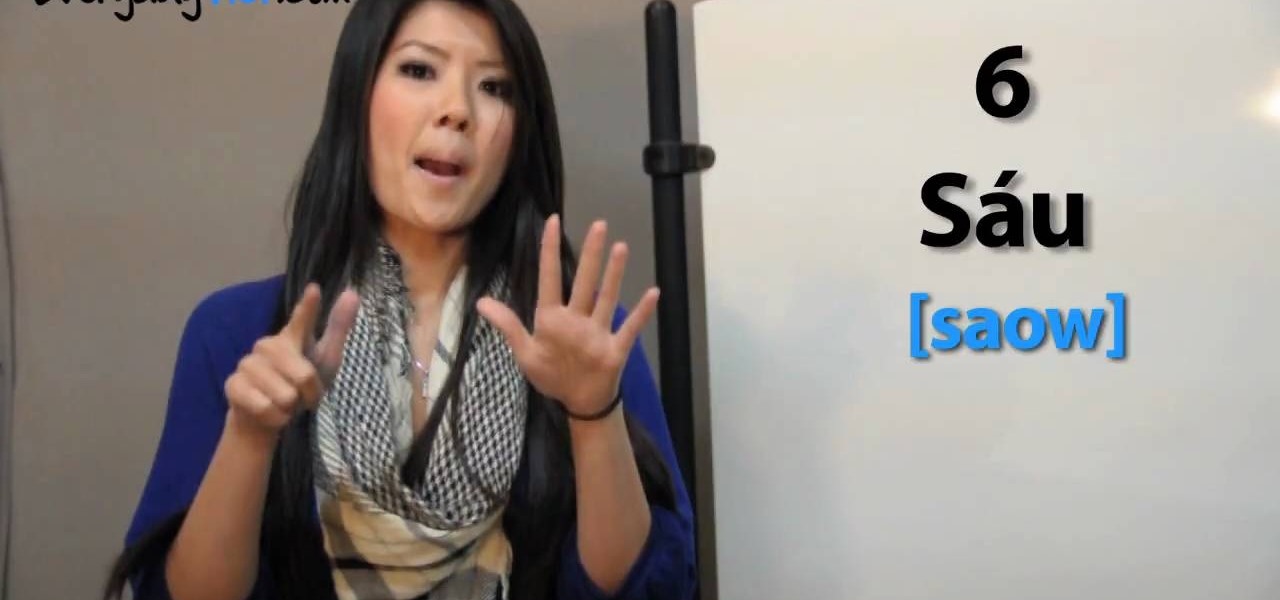
How To: Count from 1 to 10 in Vietnamese
In this tutorial we learn how to say number 1 to 10 in Vietnamese. When you learn how to say this, make sure you have the accent down right or understand how to read the language. M™t = One, Hai = Two, Ba = Three, Bon = Four, Nam = Five, Sau = Six, Bay = Seven, Tam = Eight, Chin = Nine, and Muoi = Ten. Listen to the video so you can hear how to properly say each of the words. These are pretty simple and basic, so you shouldn't have any problem saying them at all. Enjoy learning this beautiful...

How To: Count from 10 to 100 in French
Watch to learn how to count by tens from 10 to 100 in French. dix - ten
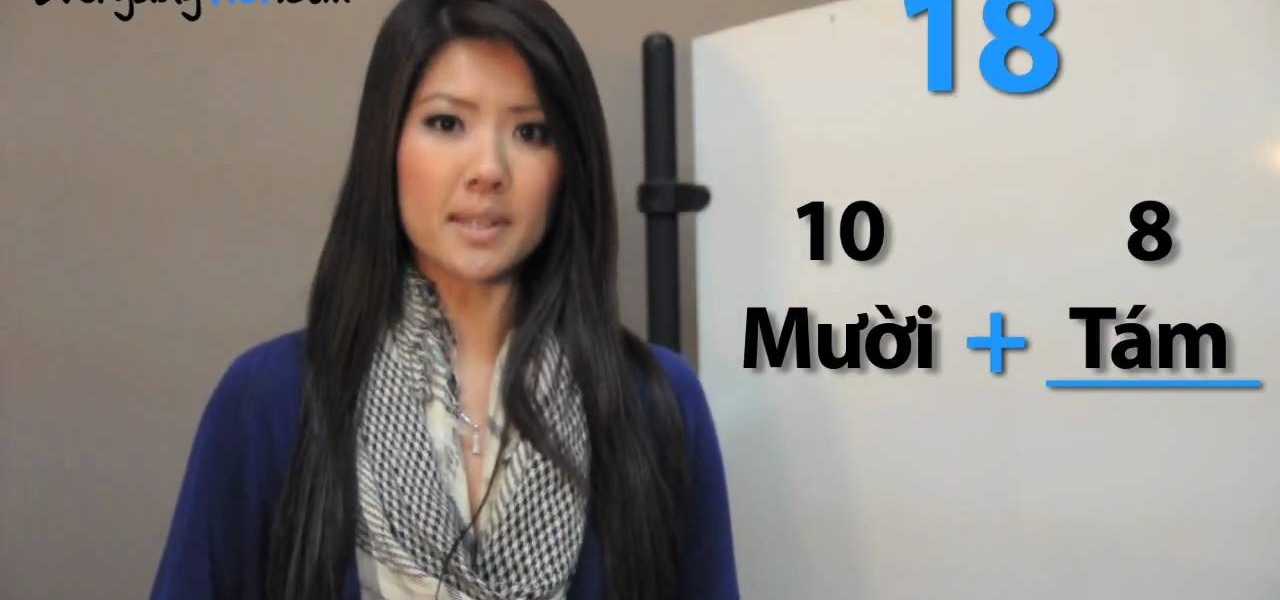
How To: Say numbers 11 to 99 in Vietnamese
In this language video tutorial you will learn how to say numbers 11 to 99 in Vietnamese. For the numbers from 11 to 19, you simply add the number to the word for 10, that is, Muoi. For example, 14 will be Muoi Bon (Bon = 4) and 18 will be Muoi Tam (Tam = 8). For multiples of 10, simply add Muoi after the number. For example, 20 will be Hai Muoi (Hai = 2), 30 will be Ba Muoi (Ba =3), 40 is Bon Muoi and so on. For all other numbers, simply add the number after the multiple of 10. For example, ...

How To: Count from 40 to 50 in French
Watch to learn how to say the numbers from forty to fifty in French. quarante - forty

How To: Say "hello," "good morning" & "Shanghai" in Shanghai
Shanghai in China has always been the most popular location choice for the World Expo, and this year's Expo is the most expensive in Expo history.

How To: Say 'My Name Is' in Perfect French ('Je M'appelle')
Pronunciation is key to learning any new language. Before diving into the vocabulary and basic phrases, a good approach is to listen and try and get your aural perception honed in. A new word or phrase, like "je m'appelle" in French, is awesome to learn, but it's important to learn it correctly: that starts and ends with pronunciation.
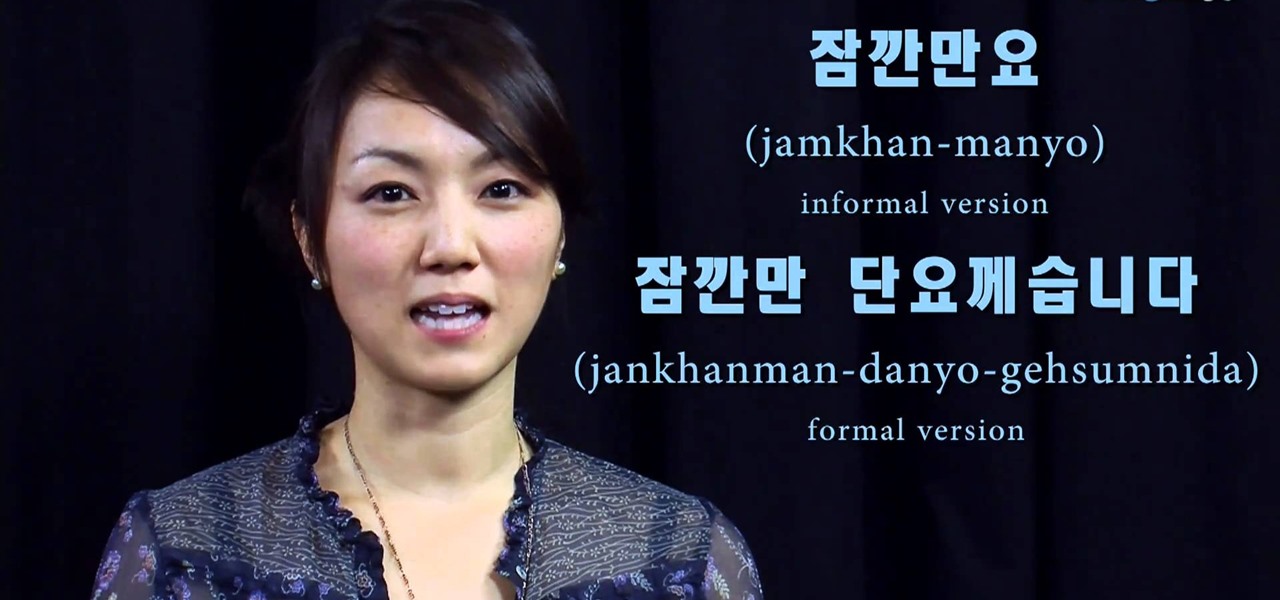
How To: Say and write the words for "I'll be right back" in Korean
In this free video language lesson from Sunny Park of Mahalo, we learn how to say, pronounce and write the Korean words for "I'll be right back." For details, and to get started using this handy Korean phrase yourself, watch this guide for Korean language learners.
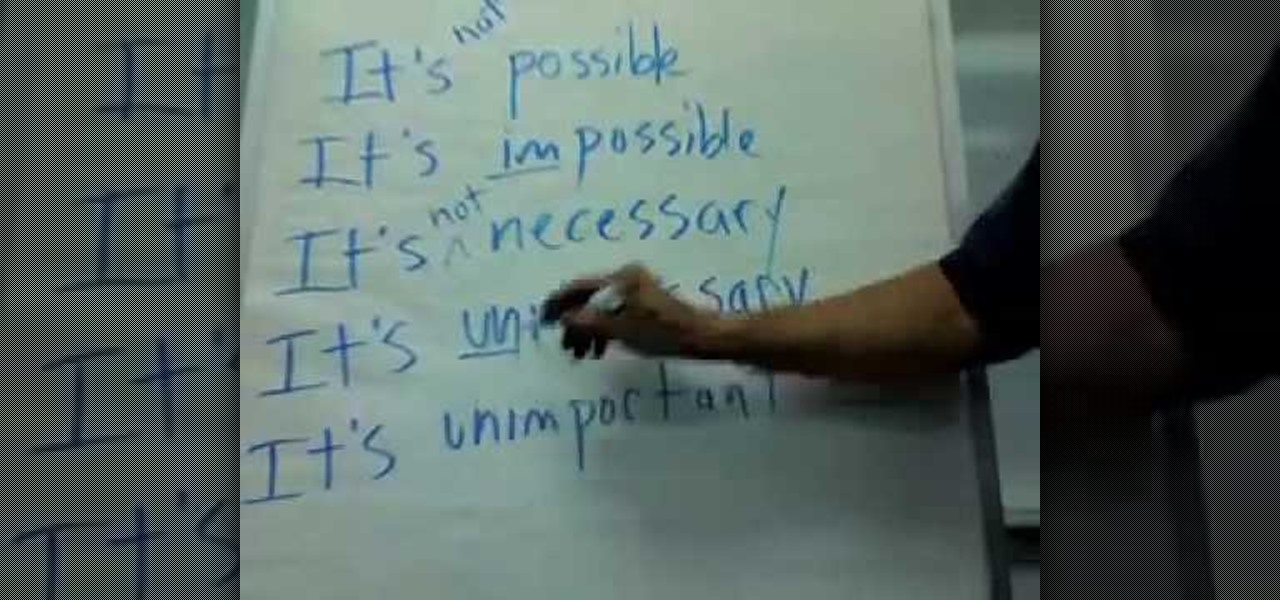
How To: Use "It's + adjective + infinitive" in English
In this video, we learn how to use "It's + adjective + infinitive" in English. To form these sentences, you will use the pattern that is stated above. This is very common in the English language, and you can put whatever you want into the sentence as the infinitive. You can change this from "it's hard to do" to It's not hard to do" to "it's easy to do". You can also make something negative, by giving it the prefix "im", which would change "possible" to "impossible". You can also ad in "un" to...
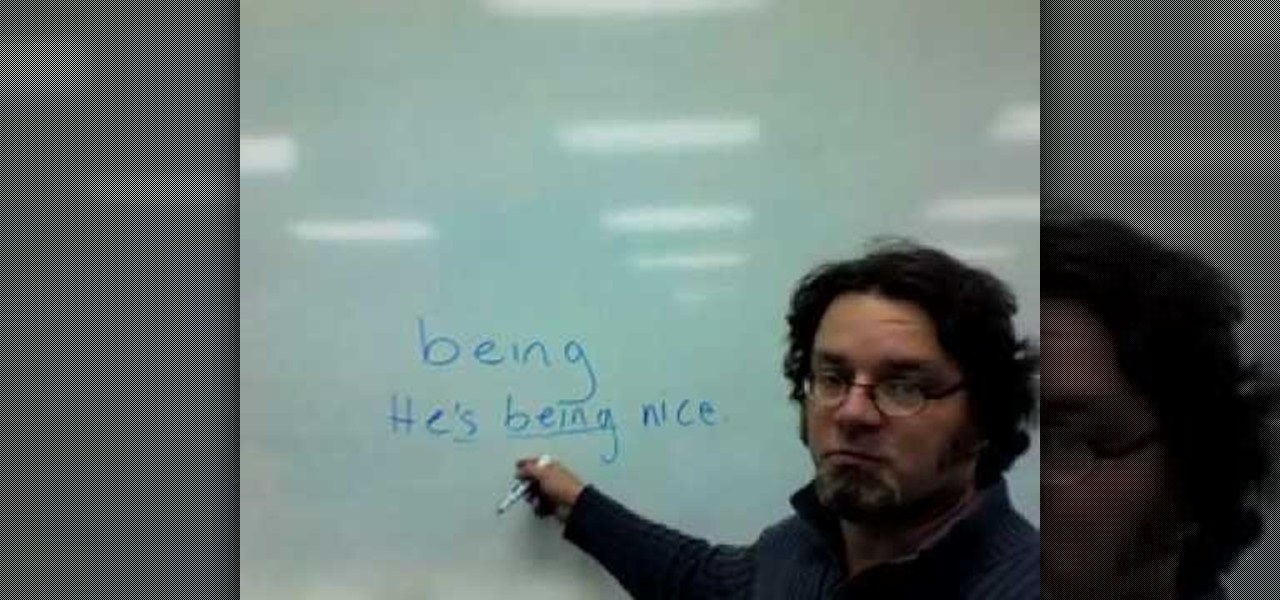
How To: Use the word "being" correctly in English
Being is a word that can be hard to master for English as a Second Language speakers. It can be used as a gerund, or in present or past continuous tenses.
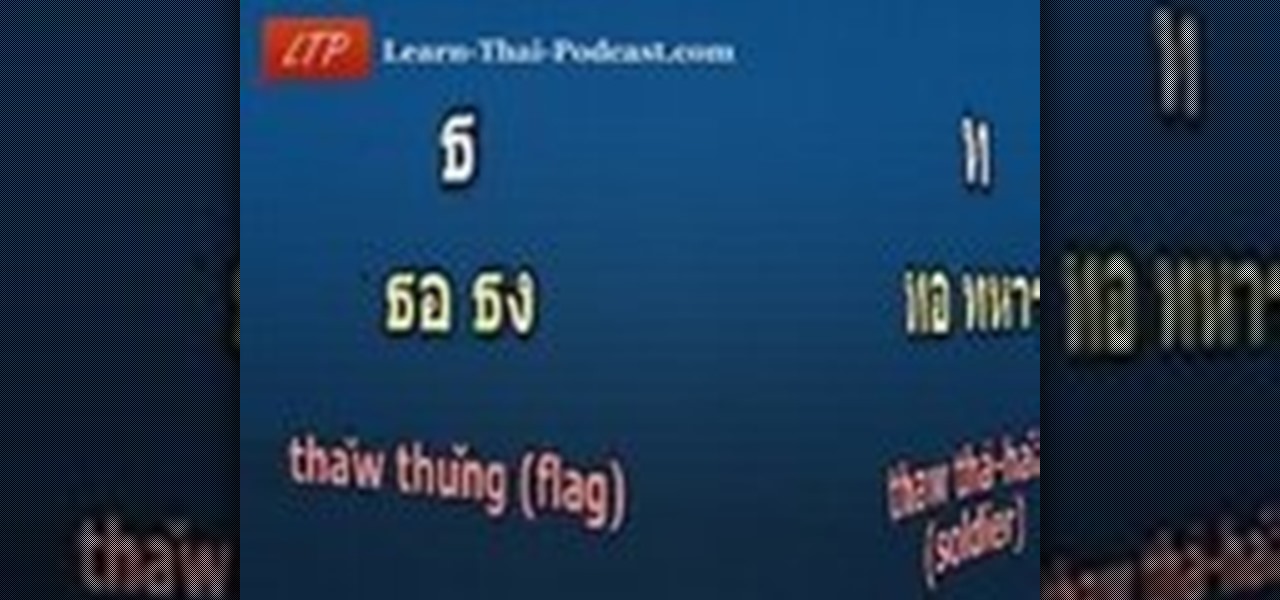
How To: Pronounce the Thai alphabet
Check out this Thai language tutorial that teaches you how to pronounce a few letters of the Thai alphabet. This lesson includes useful phrases and words for traveling in Thailand. Make sure you know these and enjoy the Thai culture, beaches and company of Thai people. Practice your Thai language skills and learn how to pronounce these letters of the Thai alphabet with this instructional language video!
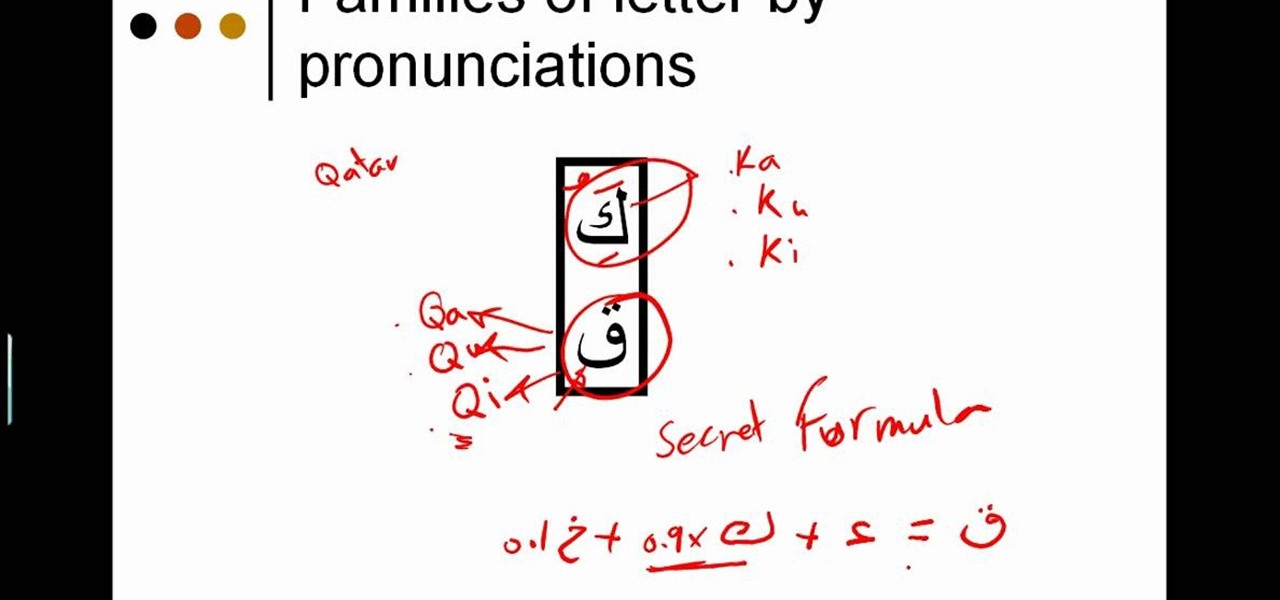
How To: Pronounce the Arabic letters Kaf and Qaf correctly
Perfect your pronunciation of Arabic words! This video covers two letters in the Arabic alphabet, Kaf and Qaf. This video details the difference and variations unique to each letter, as well as covering how to get the proper accent.
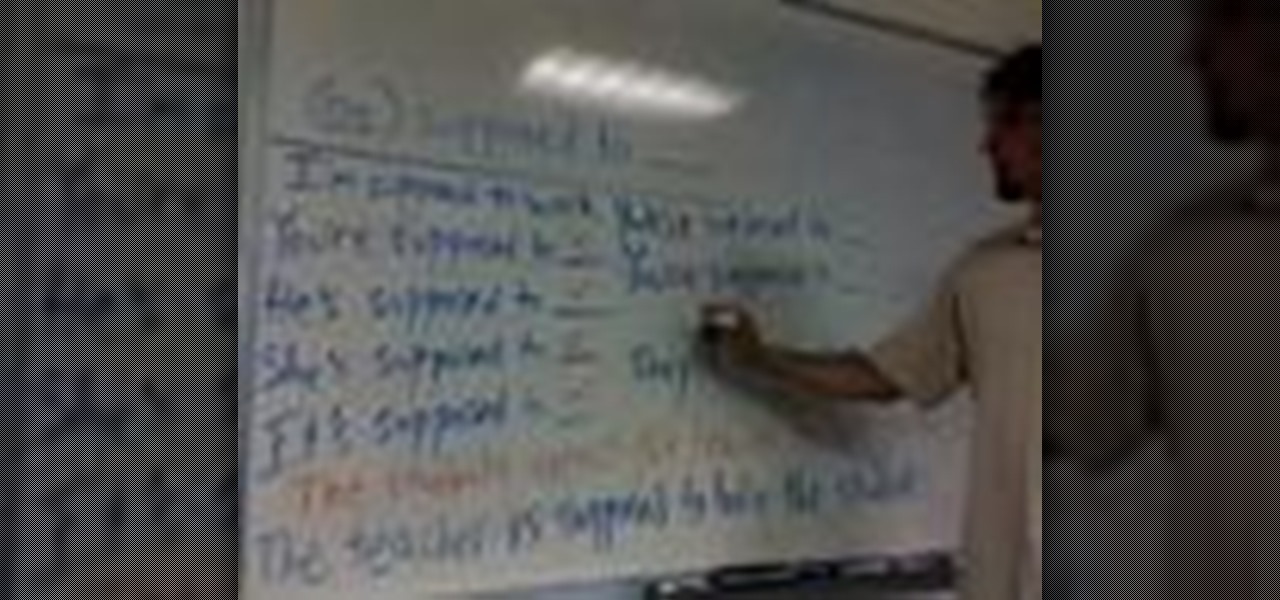
How To: Use the passive voice "supposed to" in English
In English, "supposed to" expresses obligation. Someone expects you to do something. It's an unusual form of the passive voice, but it's very important to learn. This ESL tutorial teaches you how to use "supposed to" in English. Watch this grammar how to video and you will be speaking English in no time.
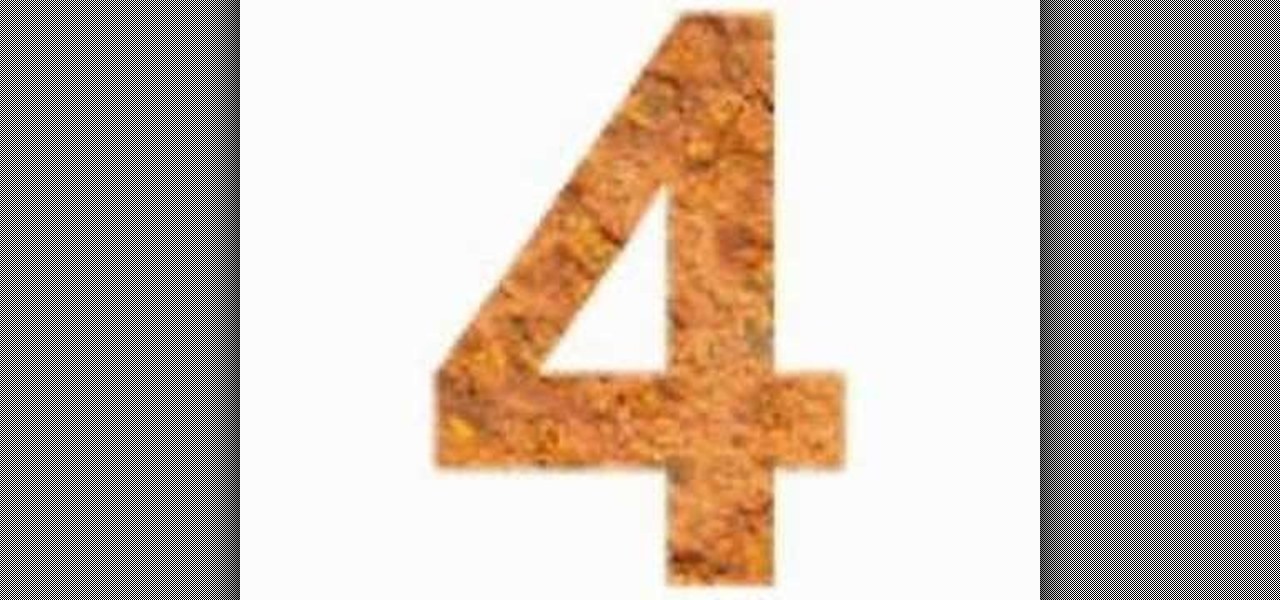
How To: Count to 10 in French
Watch to learn how to say the numbers from 1 to 10 in French. un - one
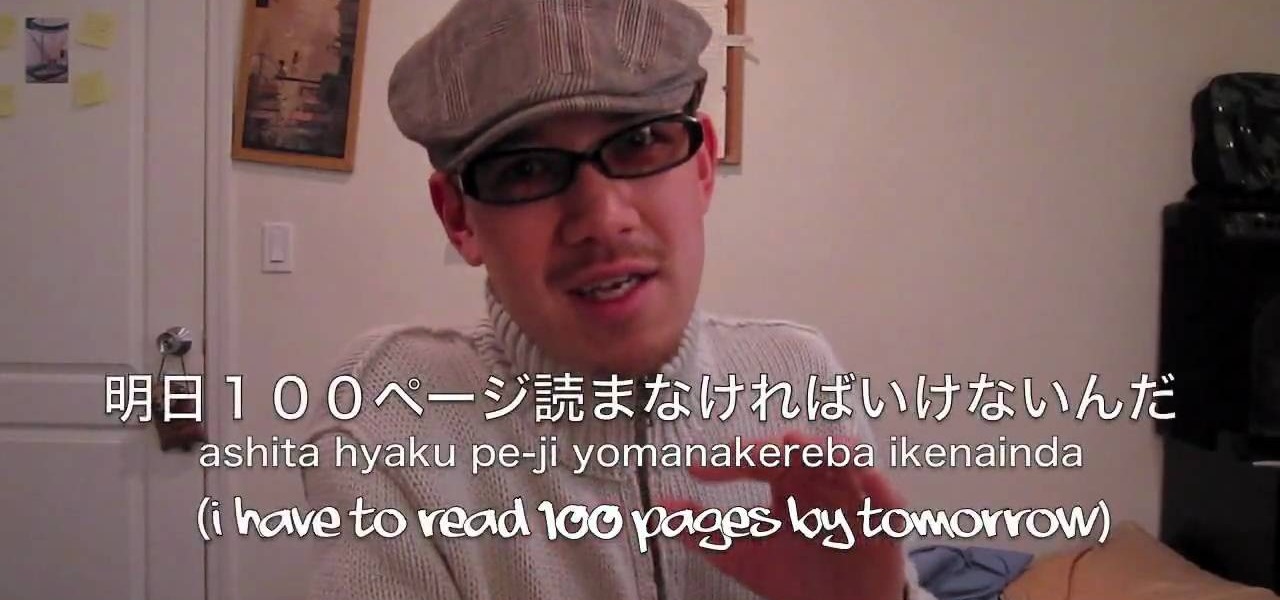
How To: Use Japanese expressions for "lazy"
In this video, we learn how to use Japanese expressions for "lazy". This is difficult to translate for most people, because of how it's expressed and said. Mendo-Kusai is expressing something you don't feel like doing. This is something that takes too much effort, and you can take this to someone casually or with your friends. An example is if you don't feel like doing your homework, or you don't want to walk all the way around a grocery store. This basically means you are being lazy and don'...
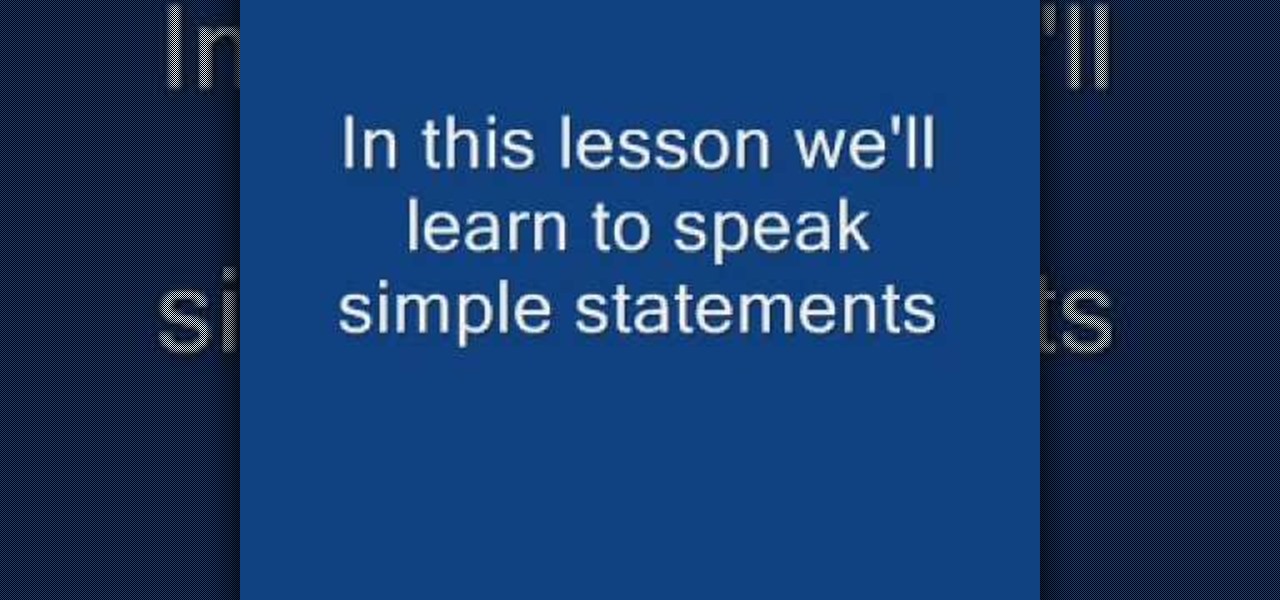
How To: Frame simple sentences for male/female in Hindi
Learn simple statements in speaking Hindi male/female. Like for male, if you say I walk it would be "main chaltaa hun" in Hindi and "main chaltee hun" for female so main for I chaltaa or chaltee for walk and hun for present tense.

How To: Say "thank you" and "you are welcome" in Shanghai
With the World Expo 2010 in Shanghai, China this year, the one thing every attendee should know is a little Shanghai dialect. Nothing big, just the key phrases, and the most polite phrases, like "thanks" and "you're welcome." Politeness always wins the best of them, even in foreign countries.

How To: Count & say the numbers in Cherokee
Check out this instructional language video to learn how to speak Cherokee! In this lesson, learn how to count the numbers one through twenty. This tutorial is great for beginners who want to improve their Cherokee language skills. Practice your Cherokee by learning the numbers and how to count!

How To: Describe professions and what someone is in French
Learn how to describe what someone is and what his or her profession is in French.

How To: Conjugate "avoir" in French in the present perfect
Learn how to conjugate the French verb "avoir" (to have) in the present perfect.

How To: Speak English smoothly using the marble technique
Destroy filler words, overcome stuttering, speak smoothly, improve enunciation, and get better at public speaking all around with just marbles and your mouth! This video is best for people learning to reduce stuttering or students learning English as a second language (ESL).
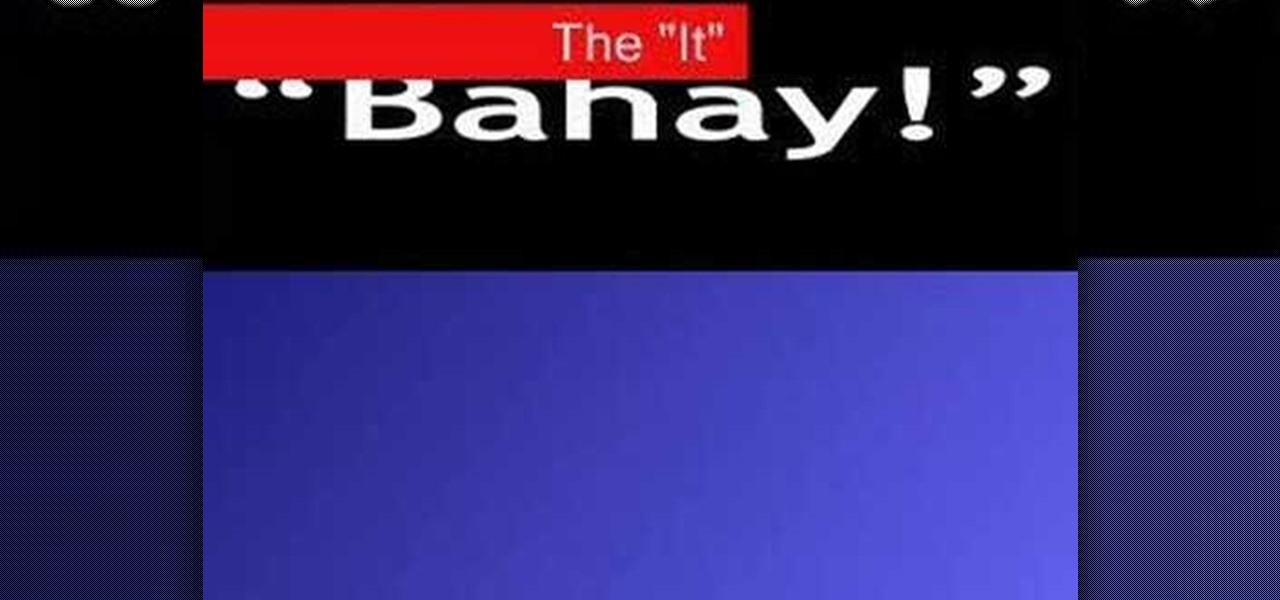
How To: Play the "bahay, baboy, bagyo" game to learn Tagalog
Here's a group dynamics game to learn Tagalog. The "It" chants Bahay, Baboy, Bagyo (House, Pig, Storm) and sends game participants on a mad scramble of musical chair proportions.

How To: Count from 20 to 30 in French
Watch to learn how to say the numbers from twenty to thirty in French. vingt - twenty
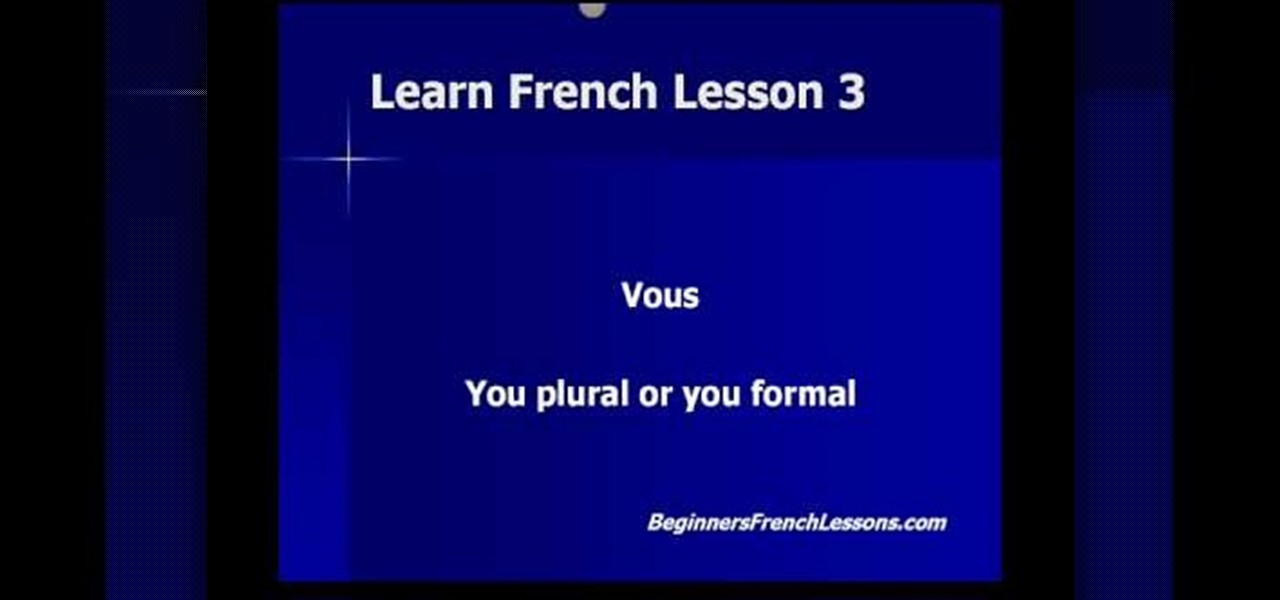
How To: Say 'I', 'you', 'he', 'she', 'we', & 'they' in French
In this French lesson, you'll learn the basic French pronouns. In the French language, pronouns like "I" and "she" are already familiar around the world, but others like "us" or "them" are unknown. Learn all of the following words in French"
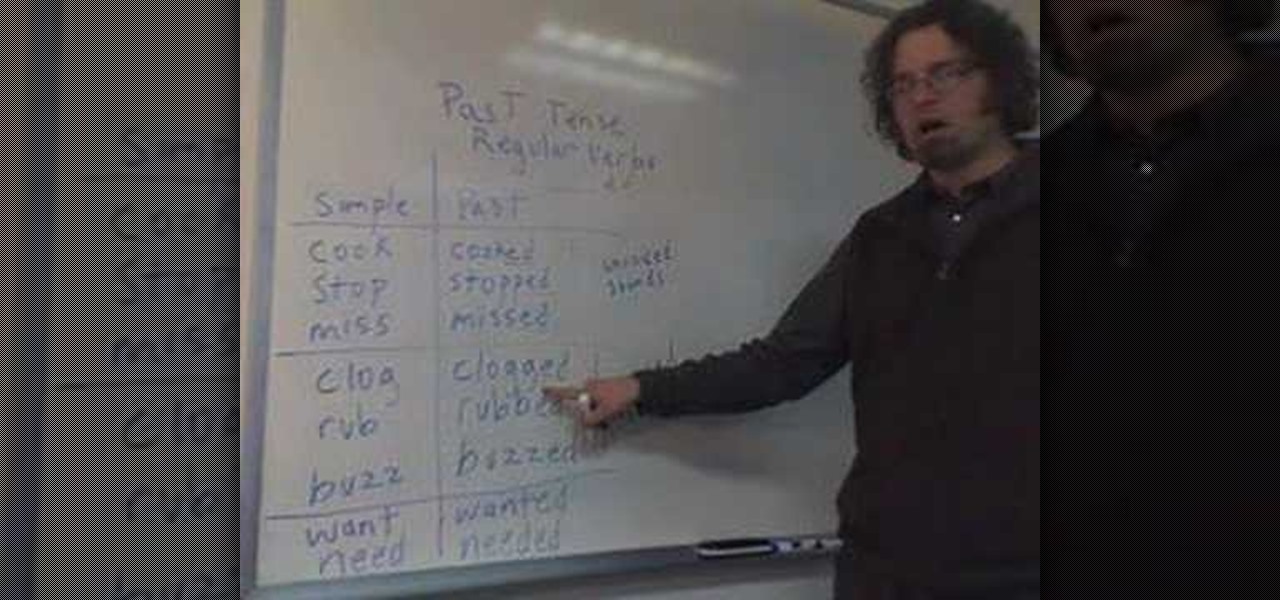
How To: Pronounce regular verbs in the past tense in English
This video shows to pronounce regular verbs in the past tense in English.

How To: Use the slash punctuation mark
Here is a useful guide to using the slash punctuation mark. Make sure you know where to appropriately place this punctuation mark, and use your slashes properly in your English writing. Use the slash punctuation mark.

How To: Ask someone if they speak English in French
In this free video language lesson, you'll learn how to ask someone if they speak english: "Parlez-vous anglais?" or "Est-ce que vous parlez anglais?" While French isn't necessarily a very difficult language for an English-speaker to learn, many stumble when it comes to pronunciation. Fortunately, the Internet is awash in clips like this one, which make learning both vocabulary and proper pronunciation a very easy task.

How To: Say "nice to meet you" in French ("enchanté")
In this free video language lesson, you'll learn how to say the French word for "pleased to meet you": "enchanté" or, for women, "enchantée." While French isn't necessarily a very difficult language for an English-speaker to learn, many stumble when it comes to pronunciation. Fortunately, the Internet is awash in clips like this one, which make learning both vocabulary and proper pronunciation a very easy task.

How To: Say 'what is your name' and 'my name is' in French
Meeting new people can be hard for some people, especially if they're using a different language, like French. This video will teach you how to say "what is your name" and "my name is" in French. To ask someone their name, a stranger or someone older than you, ask, "Comment vous appelez-vous?". When asking someone your own age, it's "Comment tu t'appelles?" To answer, say "Je m'appelle" + Your Name. Example: "Je m'appelle David."

How To: Count from 1 to 10 in Klingon
Admit it: you're a die-hard Star Trek fan at heart. And you know that the best aliens in Star Trek are the Klingons. This video will show you how to count in Klingon. There's English subtitles, but pay attention to the pronunciation! Once you learn these Klingon numbers, go ahead and try it out on your friends!

How To: Say "hello" in Polish
Learn how to say and spell out "hello" in Polish. This is a quick twelve minute video which shows the spelling and says the pronunciation of the word "hello" in the Polish language. This steps and/ or guidelines would show the easiest way to pronounce the word hello in the Polish language. The English word hello is translated as "Czesc‡" in the Polish language. The spelling may look like an easy word to pronounce but in reality, the pronunciation is different from the spelling of this word. T...

How To: Pronounce the soft "i" and a hard "e" in English
Many of my students have problems pronouncing the soft i. This ESL how to video explains how your mouth should move for the soft i and the hard e. You'll never say beach when you mean bitch again. Watch this how to video and you'll be speaking proper English in no time.
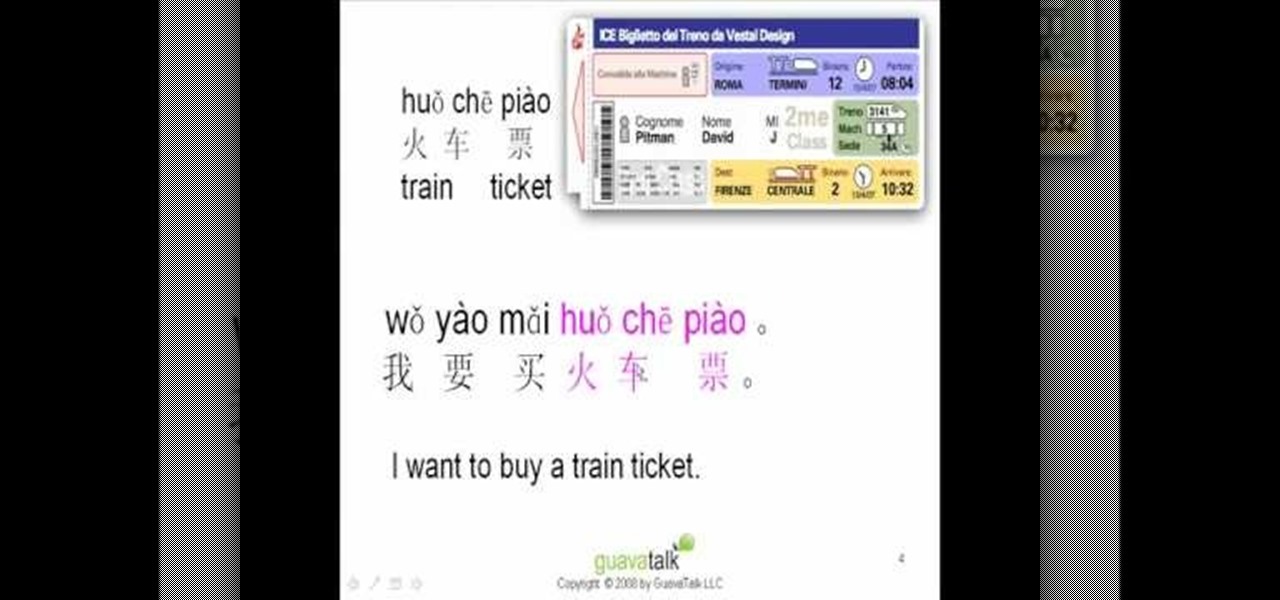
How To: Say "I want to buy" in Chinese
When you have found what you want to buy something in China, you need to know how to communicate your intention.

How To: Speak "bedroom" Italian
Want to impress your lovers with your foreign tongue? Not that tongue, dirty mind! Learn to whisper sweet nothings in Italiano. You'll have them begging for more.

How To: Read Hiragana Japanese characters
Learn how to recognize some basic Hiragana Japanese characters and the sounds they represent, as well as some very common phrases and how they're written.

How To: Say "thank you" & "you're welcome" in Vietnamese
In this video, we learn how to say "thank you" & "you're welcome" in Vietnamese. To say "thank you" you will say "C‡m _n". To say "thank you very much" you will say "C‡m _n R_t Nhi_u". To say "you're welcome" you will say "Kh™ng C— Chi". To say "no problem" you would say "Kh™ng Sao". Remember these phrases when you are in different scenarios, whether you're in the grocery store or you're in the street. Listen to the speaker in the video to better understand how each of the words are spoken an...

How To: Say "yes, no, maybe, & no, thank you" in Vietnamese
In this tutorial, we learn how to say "yes, no, maybe, & no, thank you" in Vietnamese. To say "yes", you will say "D_" in Vietnamese, this sounds like "yah". To say "no", you will say "Kh™ng". To say "maybe" you will say "C— Th_", which sounds like "caw tay". Last, to say "no thank you", you will say "D_ Kh™ng, C‡m _n". It's important that you listen to the audio in the video so you can get a good idea of exactly how to say each of the words. Break it down and practice a lot to be able to say...

How To: Say "I like you" & "I love you" in Vietnamese
Do you want to spice up your relationship and say something romantic on valentine's day? How about saying "I love you" or "I like you" in Vietnamese? This will sound different depending on if a guy or a girl is saying to one another. For a girl to say "I like you" to a guy, she would say "Em th’ch anh" and for a guy to say it to a girl, they would say "Anh th’ch em". For a girl to say "I love you" to a guy, she would say "Em yu anh". For a guy to say it to a girl, he would say "Anh yu em".

How To: Write and say the Korean words for "I am going to work"
In this free video language lesson from Sunny Park of Mahalo, we learn how to say, pronounce and write the Korean words for "I'm going to work." For details, and to get started using this handy Korean phrase yourself, watch this guide for Korean language learners.

How To: Use romantic phrases in Brazilian Portuguese
In this tutorial, we learn how to use romantic phrases in Brazilian Portuguese. These are common phrases that anyone can learn, and can help you in everyday Brazilian Portuguese speech. When you are wanting to compliment someone or tell them something romantic, you can say a number of different things. The word "lu" is another word for love, so you could use this my saying "mi lu, linda" which would be "my love, Linda". To say "you are very pretty/cute" you would say "voce e muito linda". To ...
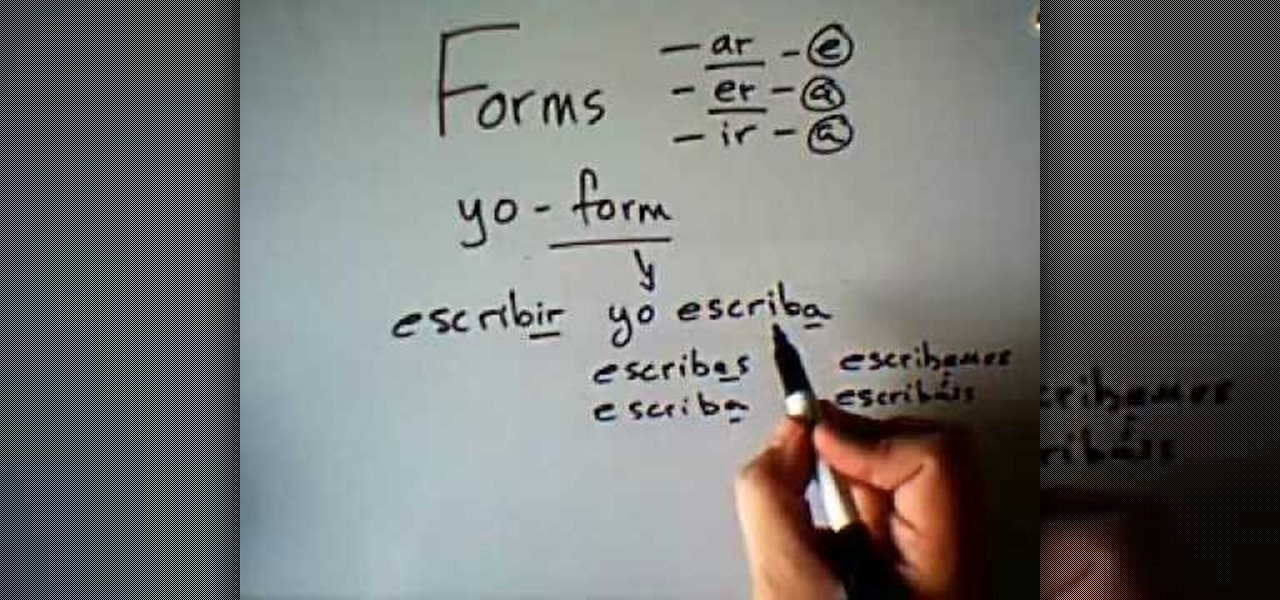
How To: Use the subjunctive with verbs of volition in Spanish
In this video, we learn how to speak Spanish: Subjunctive with verbs of volition. Volition is requests when someone asks, needs, or wants something. To form these, you must first take the "yo" form and remove the final "o". Then, you will add in the opposite vowel endings. For example, with "yo hablo" you would say, "yo hable" or "hables". This will change if you are talking about a group of people, one person, or a formal group of people. A verb with the "er" ending will change to "a" or "es...





